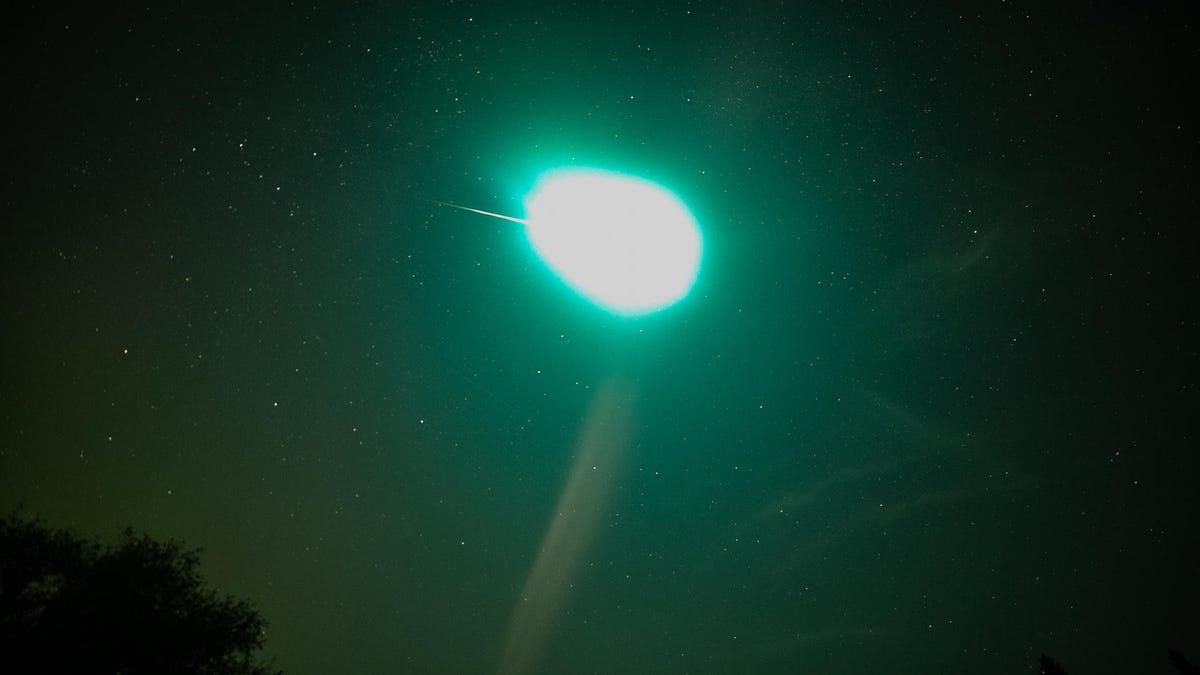How to view an 'invisible' meteor shower this week
The meteors knowns as the Arietids are full of potential that mostly goes unnoticed.

More than 200 people reported a fireball over Alberta, Canada, to the American Meteor Society on Aug. 31, 2019.
AMS/Kyle C.Meteor spotting is traditionally a nighttime activity for obvious reasons, but this week a little-known meteor shower will peak during daytime hours. The huge fireball in the sky we call the sun will render June's Arietid meteor shower largely invisible, but it may still be possible to see a few of the shooting stars.
The meteors known as Arietids generally emanate from the direction of the constellation Aries, which rises above the horizon a little less than two hours before sunrise this time of year. That means that if you get up early, you might be able to catch a handful of meteors before dawn starts to wash out the show.
Different sources place this year's peak somewhere between June 4 and June 10, with the shower remaining active until at least June 17.
If there were no sun, the Arietids would be most brilliant just before noon each day, with perhaps dozens of meteors visible per hour. In other words if our planet's rotation were just a little different, the Arietids might be one of the more famous meteor showers, right up there with the Perseids.
Alas, that is not the world we live on, and the Arietids are known as a daytime or "invisible" shower.
But, if you do sacrifice a little sleep to wake up early and try to catch a few of these meteors, you might be rewarded with some bright "earth-grazers" burning up along the horizon.
The exact source of the Arietids is unknown, but likely contenders are clouds of dust left behind by either the asteroid 1566 Icarus or the comet 96P/Machholz.
The American Meteor Society says it may be possible to see up to nine meteors per hour under ideal conditions this year with minimal moonlight.
The best plan to try and catch the Arietids is to find a spot with a wide view of the sky away from all light pollution. Try to orient yourself toward Aries and then just lie back, let your eyes adjust, relax and enjoy.
Follow CNET's 2021 Space Calendar to stay up to date with all the latest space news this year. You can even add it to your own Google Calendar.

